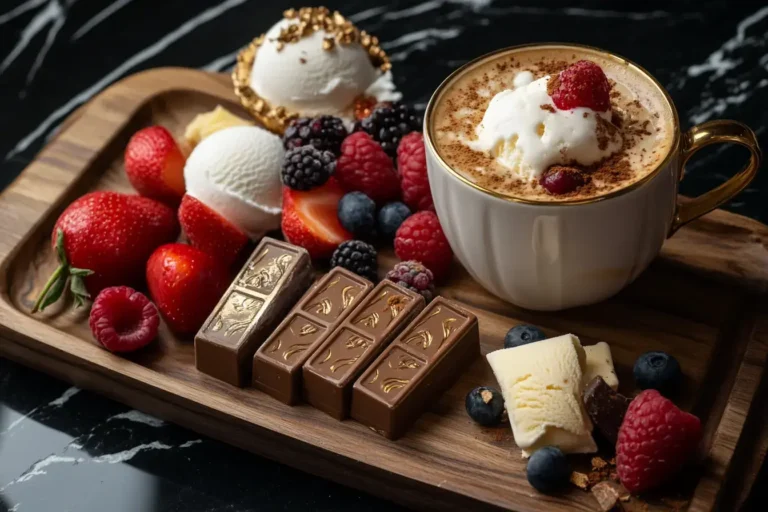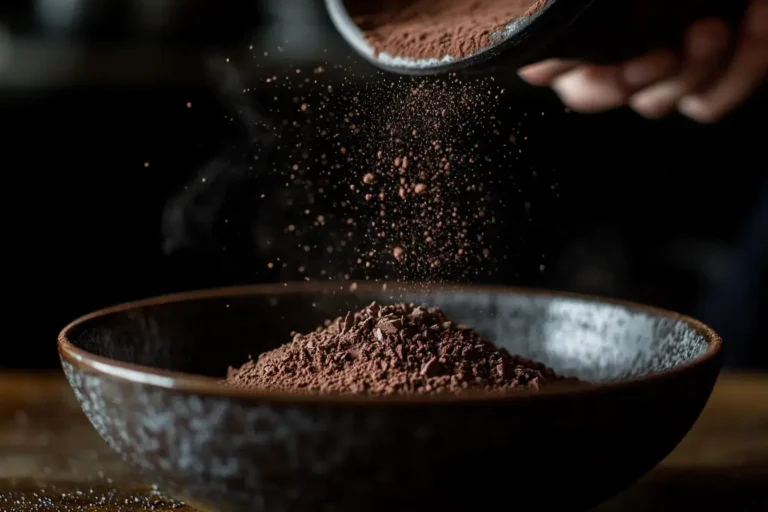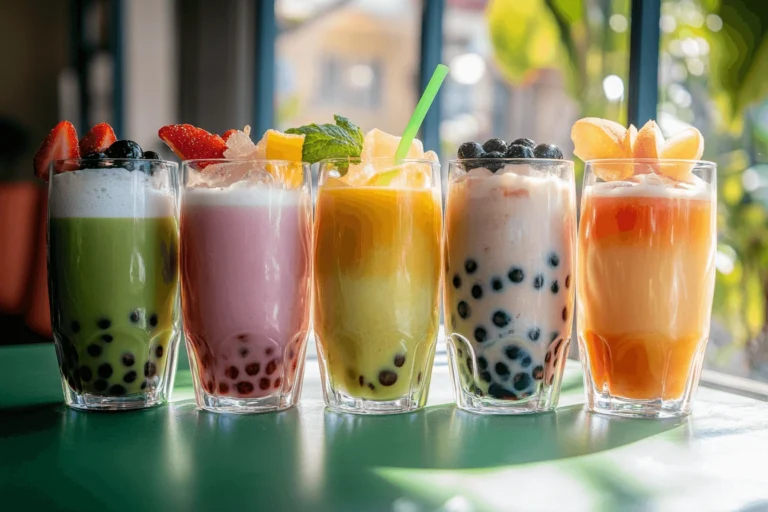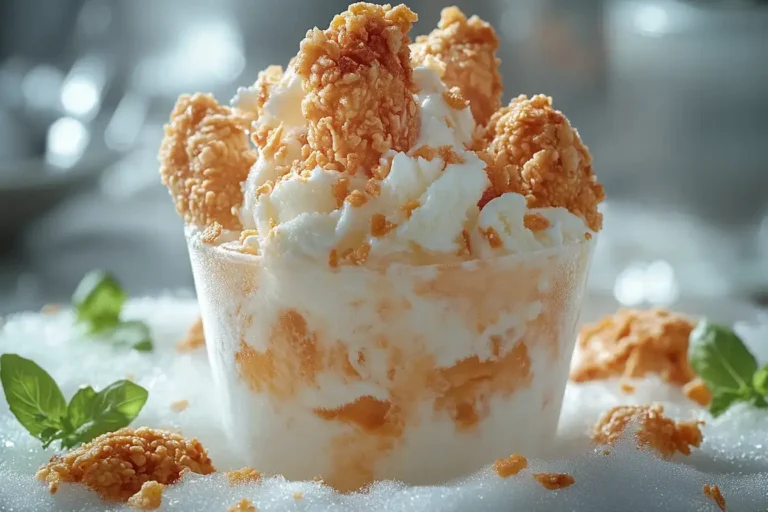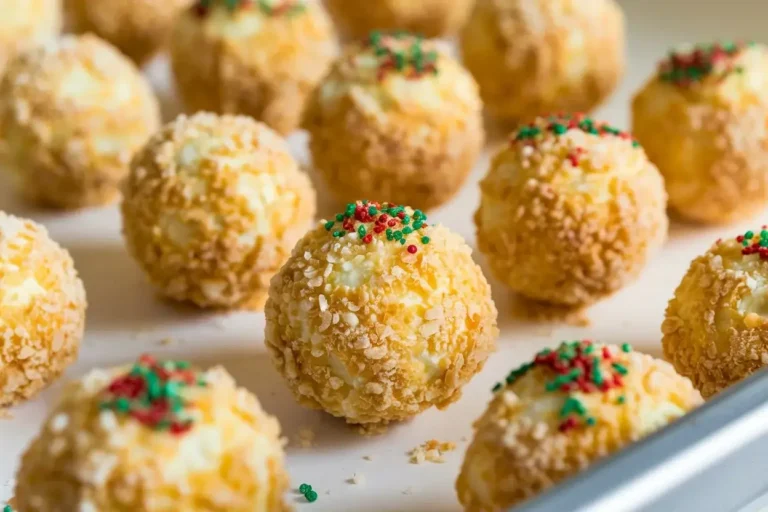What is the Difference Between Chocolate and Bon Bons?
Introduction to the World of Chocolate and Bon Bons
Chocolate and bon bons have long been iconic treats in the world of sweets. Although they may seem similar at first glance, they belong to distinct categories of indulgence. Whether you’re a casual snacker or a confectionery expert, knowing the difference between chocolate and bon bons will add a new layer of appreciation to these beloved treats. Chocolate, rich in its pure form, has captivated people for centuries, while bon bons, with their playful bite-sized fillings, offer a more creative and complex experience.
Understanding these subtle differences will not only enhance your knowledge but also inspire you to explore new ways to enjoy or create these delightful confections at home. By selecting the best ingredients and mastering essential techniques, you can elevate your appreciation for these sweets. Additionally, discovering how to pair chocolate with various fillings can lead to exciting culinary experiments.
Why This Recipe? Exploring the Difference Between Chocolate and Bon Bons
Benefits of Chocolate and Bon Bons
Chocolate, especially dark chocolate, offers various health benefits due to its high antioxidant content. It improves heart health, reduces inflammation, and enhances brain function. In particular, dark chocolate is rich in essential minerals like magnesium, iron, and zinc, making it an indulgent yet healthy option when consumed in moderation.
Bon bons, meanwhile, provide a more decadent experience with their rich fillings like fruit preserves, caramel, or liqueurs. These confections bring layers of flavor and texture, turning a simple chocolate shell into an elevated treat. They appeal to more adventurous palates due to the variety of fillings and the creativity involved in making them.
Who This Guide is For
This guide is ideal for a broad audience. Whether you’re a chocolate lover, bon bon enthusiast, or simply curious about the differences, you’ll find value here. Beginners can follow the straightforward explanations, while seasoned cooks can try out the advanced techniques. Busy parents will appreciate the recipes for family-friendly treats, and health-conscious individuals can explore healthier options like dark chocolate or vegan alternatives. Moreover, those with a passion for baking can refine their skills and impress others with handcrafted confections.
Understanding Chocolate and Bon Bons
Definition of Chocolate
Chocolate is derived from cocoa beans and crafted into various forms, primarily depending on the ratio of cocoa solids, cocoa butter, sugar, and milk. Dark chocolate contains a higher percentage of cocoa solids, giving it a more intense, bittersweet flavor. Milk chocolate, by contrast, includes milk and sugar, making it sweeter and creamier. White chocolate, often mistaken for chocolate, lacks cocoa solids but still contains cocoa butter, sugar, and milk solids.
Chocolate offers a bold, rich flavor that suits a variety of culinary applications, from baking to candy-making. Choosing the right type of chocolate—dark, milk, or white—depends largely on your taste preferences and the recipe requirements. Consequently, understanding the role of each type can help you make informed choices when crafting your own sweets.
Definition of Bon Bons
Bon bons, which means “good-good” in French, are small confections coated in chocolate or sugar and filled with various ingredients. These fillings often include creams, fruit purées, caramel, or liqueurs. The distinction between bon bons and plain chocolates lies in their dual-layer approach: the hard outer shell made of chocolate or sugar and the flavorful filling that makes each bite unique.
Crafting bon bons involves creating thin shells from tempered chocolate and adding carefully selected fillings. The filling adds layers of texture and flavor that go beyond the simplicity of plain chocolate, turning each bon bon into a mini masterpiece. As a result, bon bons offer a more luxurious experience.
Ingredients and Substitutes for Chocolate and Bon Bons
Essential Ingredients
To make chocolate or bon bons, the core ingredients include:
- Cocoa solids: The primary source of chocolate’s flavor.
- Cocoa butter: Provides smoothness and texture.
- Sugar: Sweetens the chocolate.
- Milk: Used in milk chocolate for creaminess.
- Flavorings: Vanilla, liqueurs, or spices add unique flavors to chocolate and bon bon fillings.
For bon bon fillings, common ingredients include:
- Cream: Adds richness to ganache or truffle fillings.
- Butter: Enriches caramel or other creamy fillings.
- Fruit purées: Provide sweetness and tartness in the fillings.
- Nuts: Add crunch and texture.
Substitution Options for Allergies and Dietary Preferences
You can easily adapt recipes for dietary restrictions. For example, replace dairy products with plant-based alternatives like almond milk or coconut milk. To make sugar-free chocolate, opt for sweeteners like stevia or monk fruit, and use vegan chocolates that contain no milk solids. Furthermore, using these substitutes ensures that those with dietary preferences can still enjoy delicious confections.
These substitutions allow everyone, including those with allergies or dietary restrictions, to enjoy chocolate and bon bons without missing out on flavor or texture.
Step-by-Step Instructions for Making Chocolate and Bon Bons
Melting and Tempering Chocolate
Tempering chocolate is crucial for achieving a glossy finish and a firm texture. Properly tempered chocolate ensures that your bon bons will have a smooth, professional appearance and a satisfying snap. Here’s how to do it:
- Chop the chocolate: Begin by chopping the chocolate into small, even pieces.
- Melt two-thirds of the chocolate: Place two-thirds of the chopped chocolate in a heatproof bowl and melt it over a simmering water bath.
- Remove from heat: Take the bowl off the heat and stir in the remaining one-third of the chocolate, cooling the mixture and beginning the tempering process.
- Reheat gently: If the chocolate cools too much, gently reheat it to the proper temperature for tempering.
Molding and Filling Bon Bons
Once the chocolate is tempered, it’s time to create the bon bon shells.
- Coat the molds: Pour the tempered chocolate into the bon bon molds, ensuring that the interior is fully coated.
- Create a cavity: Tilt the molds to let excess chocolate drip out, leaving behind a thin shell.
- Chill the shells: Allow the shells to harden in the refrigerator.
- Fill the shells: Add the filling of your choice, such as ganache, caramel, or fruit preserves.
- Seal the bon bons: Pour more tempered chocolate over the filled molds to seal the bon bons, then let them set completely before removing from the molds. Consequently, your bon bons will have a professional finish.
Advanced Techniques in Chocolate and Bon Bon Making
The Art of Chocolate Painting
If you want to add a creative touch, consider using cocoa butter paints to decorate the inside of the bon bon molds. Here’s how you can do it:
- Heat the cocoa butter: Slightly melt the cocoa butter and mix it with food coloring.
- Paint the molds: Using a small brush, paint designs inside the molds before adding chocolate. This technique adds a beautiful, artistic touch to your bon bons.
Multi-Layered Bon Bons
For a more complex flavor profile, try making multi-layered bon bons. By layering fillings such as fruit purée and ganache, you can create bon bons that offer varied textures and flavors.
- Pour the base layer: Add a thin layer of chocolate to the mold to form the base.
- Add the first filling: Once the base sets, pour in the first filling, like a caramel or fruit purée.
- Layer the second filling: After the first layer solidifies, add a contrasting filling, like ganache or cream.
- Seal with chocolate: Finish with a layer of chocolate to close the bon bon. Ultimately, this method creates bon bons with layered textures and more depth.
Tips and Tricks for Perfect Chocolate and Bon Bons
Mastering Tempering
Tempering is key to ensuring your chocolate has the perfect texture. If the chocolate isn’t tempered properly, it may bloom, leaving unsightly white streaks on the surface. Using a thermometer to monitor the chocolate’s temperature is crucial for success. If you’re just starting, you may want to invest in a small tempering machine to ensure consistent results.
Creative Filling Ideas
Experimenting with different fillings can elevate your bon bons. Infusing your ganache with tea or adding spices like cinnamon can give your bon bons an unexpected twist. For those who enjoy a more sophisticated flavor, incorporating alcohol like rum or Grand Marnier into the filling adds depth and richness.
Variations and Dietary Adjustments for Chocolate Lovers
Vegan and Sugar-Free Options
Vegan and sugar-free bon bons are becoming increasingly popular. To make vegan bon bons, simply swap out the cream in your ganache for coconut cream or almond milk. You can also use dairy-free chocolate, which is made without milk solids. For sugar-free bon bons, choose chocolates sweetened with stevia or monk fruit.
- Vegan Ganache: Use coconut cream to create a smooth, rich ganache.
- Sugar-Free Bon Bons: Use sugar substitutes and sugar-free dark chocolate to create indulgent treats that won’t spike your blood sugar. Therefore, you can satisfy your sweet tooth without compromising health.
Flavor Innovations
For those seeking something new, try experimenting with unique flavors. Matcha, lavender, or even chili pepper can bring unexpected but delightful notes to your bon bons. Combining these flavors with white or dark chocolate opens up endless possibilities for creativity.
Serving and Presentation Ideas for Chocolate and Bon Bons
Thematic Presentation
Serving bon bons or chocolates for different occasions is a fun way to impress guests. For Valentine’s Day, heart-shaped bon bons with pink and red accents add a romantic touch. For festive holidays, using metallic cocoa butter paints or edible glitter adds a bit of sparkle. Meanwhile, minimalist designs featuring simple dark chocolate and gold leaf create an elegant presentation for formal events.
Gift Packaging Tips
Packaging is an important part of the presentation. A beautifully packaged box of bon bons makes a thoughtful gift for friends, family, or colleagues. Here are a few tips:
- Use sturdy boxes with individual compartments to prevent chocolates from touching and melting.
- Line the box with parchment paper for a clean, professional look.
- Add ribbons or personalized tags to complete the package. As a result, the recipient will feel even more special receiving such a well-packaged gift.
Nutritional Information for Chocolate and Bon Bons
Caloric Content and Serving Size
While chocolate and bon bons can be indulgent, it’s important to know their nutritional impact. Here’s a breakdown:
- Dark Chocolate: Contains approximately 150 calories per ounce, with a high amount of fiber and healthy fats.
- Milk Chocolate: Slightly higher in calories, around 160 per ounce, due to its milk and sugar content.
- Bon Bons: Depending on the filling, bon bons can range from 60 to 120 calories per piece.
Opting for dark chocolate and lighter fillings, like fruit purées, can help reduce the calorie count without sacrificing flavor.
Health Benefits of Ingredients
Dark chocolate offers a range of health benefits. Studies show that it can lower blood pressure, reduce the risk of stroke, and improve heart health. Additionally, nuts, often found in bon bon fillings, provide healthy fats, protein, and essential vitamins like vitamin E. Including dark chocolate and nuts in your diet can add both flavor and health benefits.
The Cultural Journey of Chocolate
Historical Significance
Chocolate’s history spans thousands of years, originating in Mesoamerica, where the Olmecs, Mayans, and Aztecs used cacao beans in rituals and as currency. When chocolate arrived in Europe during the 16th century, it became a sweet treat enjoyed by royalty. Over time, it transformed into the chocolate bars and bon bons we know today.
Bon bons have a different story. In 17th-century France, they started as sugar-coated nuts or fruits but evolved into filled chocolate confections, gaining popularity in patisseries across Europe. Eventually, bon bons became known for their intricate craftsmanship.
Chocolate in World Cultures
Different cultures have adopted and adapted chocolate in various ways:
- France: Known for intricate bon bons filled with liqueurs or ganache.
- Belgium: Famous for pralines and truffles.
- Switzerland: Renowned for creamy milk chocolate.
- Mexico: Uses chocolate in both savory dishes like mole and sweet treats.
Educational Segment: From Cocoa Bean to Chocolate Bar
The Process of Chocolate Making
The process of making chocolate begins with harvesting cocoa beans, which are fermented, dried, and roasted to develop their flavor. After roasting, the beans are ground into cocoa mass, separating the cocoa butter from the solids. From there, manufacturers blend cocoa butter, sugar, and milk to create different types of chocolate.
- Fermentation: The beans undergo fermentation for several days to develop flavor.
- Roasting: This step enhances the flavor, similar to roasting coffee beans.
- Grinding: The roasted beans are ground into cocoa mass.
- Conching: This step smooths and refines the chocolate.
- Tempering: The chocolate is tempered to give it a glossy finish and firm texture.
Sustainability in Chocolate Production
With increasing consumer awareness, sustainable chocolate production has become a key focus. Fair trade certifications ensure that farmers receive fair wages, while organic and sustainable farming practices protect the environment. Supporting brands that prioritize ethical sourcing is a small way to make a big difference.
Pairing Chocolate with Other Foods and Beverages
Wine and Chocolate Pairings
Pairing chocolate with wine enhances both the chocolate and the wine, making for a sophisticated tasting experience. Here are some suggestions:
- Dark Chocolate: Pairs best with full-bodied red wines like Cabernet Sauvignon or Zinfandel.
- Milk Chocolate: Matches well with lighter wines like Pinot Noir or Merlot.
- White Chocolate: Complements sweet wines like Moscato or Riesling.
Chocolate and Cheese
Chocolate and cheese might seem like an unusual combination, but the richness of both can create a surprisingly harmonious pairing. Consider these options:
- Dark Chocolate and Blue Cheese: The boldness of dark chocolate works well with the strong flavor of blue cheese.
- Milk Chocolate and Brie: The creaminess of both the chocolate and the cheese complements each other.
- White Chocolate and Goat Cheese: The tang of goat cheese balances the sweetness of white chocolate.
Hosting a wine, chocolate, and cheese pairing can be a fun and sophisticated event, offering guests a unique flavor experience.
Conclusion: Embracing the Art of Chocolate and Bon Bons
Chocolate and bon bons offer endless possibilities for indulgence, creativity, and flavor. Whether you’re savoring the bold richness of dark chocolate or enjoying the layered textures of a beautifully crafted bon bon, these treats provide a rewarding experience for both beginners and experts alike. By learning the differences between chocolate and bon bons, you can expand your culinary skills and take your confectionery to the next level.
Experiment with various flavors, techniques, and presentations to create confections that not only taste amazing but also look stunning. Share your creations with loved ones, and remember to continue exploring the rich history and cultural significance of these iconic sweets. With a little patience and practice, you’ll master the art of making perfect chocolates and bon bons, one delectable bite at a time.

